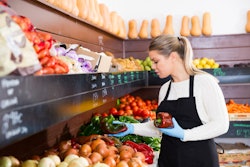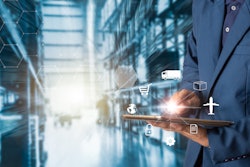
The Coronavirus disease (COVID-19) catalyzed change across all industries, but the transformations it brought to the food and beverage sector have been particularly pronounced. The pressures of the pandemic made e-commerce a sector-sweeping reality years before it might have been adopted otherwise. Since this time last March, most grocers and food vendors have completely reimagined their consumer reactions. And, the change hasn’t come without its pain points.
First, it’s worth understanding the size of the shift. According to a study by Mercatus, online grocery sales reached $7.2 billion in June 2020. Compared to online sales in August 2019, which were roughly $1.2 billion, that’s a $6 billion increase over 10 short months. Concurrently, the average number of physical store locations a consumer might visit each week has dropped from a pre-pandemic average of 4.4 to a new normal of 2.8, according to research by McKinsey & Company.
The almost overnight adoption of new supply and fulfillment protocols made clear the existing inefficiencies in food supply chains. As consumer demand became volatile and travel restrictions made everything more complication, the weaknesses became obvious. Shortages popped up across the market, while some food suppliers, unable to ship their goods, incurred the costs of excess demand. It became clear, quickly, that existing supply chain processes didn’t have the flexibility to adapt to changing market demand. But, new consumer habits and the move toward e-commerce will continue to ask the supply chain to do just that.
AI for flexibility
Artificial intelligence (AI) is the missing supply chain piece. Properly integrated into food and beverage supply chain processes, AI can introduce the sector to new levels of flexibility. Already, we’re seeing an overwhelming appetite for AI in the food and beverage sector, a trend that’s expected to continue in the post-pandemic market.
AI in the food supply chain network can start at the beginning, using the new point-of-sale data that’s been made available through e-commerce for a more accurate understanding of inventory management. Smart technologies have the ability to scan point-of-sale data, social media trends and consumer behavior patterns instantly, offering more information than we can currently imagine. More data quickly translates into better planning, helping food and beverage professionals understand their demand forecast and adjust their orders accordingly. AI technologies can accumulate the patterns of this process, and build targeted algorithms off of which vendors can base their procurement decisions.
In fact, AI can take this one step further by automating the entire procurement process. Automatic procurement would allow the smart technology to communicate its demand forecast directly to suppliers to act autonomously based on the findings of its algorithm. This is perhaps one step ahead of the sector as it stands, but if the last few months are any indication, it’s not too far away.
Solving visibility
Above and beyond supply chain planning, AI can help promote better visibility across the entire supply chain process. AI offers vendors and suppliers new ways to communicate and manage information without labor intensity or procedural redundancy.
There’s a lot to be gained with great visibility as it relates to quality assurance, as the e-commerce option poses new complications to food safety and product contamination. While food spoilage is no new phenomenon, the kind of quality assurance that happens on grocery store shelves now also needs to be happening across multiple supply chain touch points as more orders are being delivered directly to the consumer. Smarter analytic technology can make better predictions regarding what food is needed and which products are likely to have gone to waste, minimizing the chance of any unsafe food products circulating and helping manufacturing teams reduce food spoilage.
Robots at the top of the food chain
Robotics, in combination with AI, are further accelerating the shifts in the food supply chain network. Consider the above example regarding quality control. AI technologies can predict spoilage and identify which raw materials might be best used where. Software, sensors and robotic equipment could physically sort the products, analyzing the shape, size and freshness of the each to prioritize its use while identifying and removing any defective items.
As more products move straight from cold storage to the homes of consumers, skipping the intermediary that was once the grocery store shelf, robotics are seeing quick uptake in food packaging. Amassing individual packages, grouping them together for shipments and deploying the boxes onto a pallet are all well within the range of robotic capabilities. Many vendors are choosing these kinds of investments to fill in the gaps that pandemic protocol has brought to the surface.
These kinds of advancements have sparked imaginations across the nation. Eagerly, people await the day that drones deliver all groceries and kitchens are full of tiny robots, perfecting the art of the soufflé. Equally imaginative, many people in the sector fear AI and robotics as parallel forces that will slowly displace labor and contribute negatively to an already wobbling job economy.
But, if history is any guide, AI and robotics will see a more natural adoption curve. They’ll move us forward in important ways, bridging the gap between pre- and post-pandemic operations, and creating new opportunities for paid labor as the food supply chain process continues to evolve. Less waste, more resilience and a smarter path from cold storage to kitchen table are just a few of the things toward which we can look forward.


















